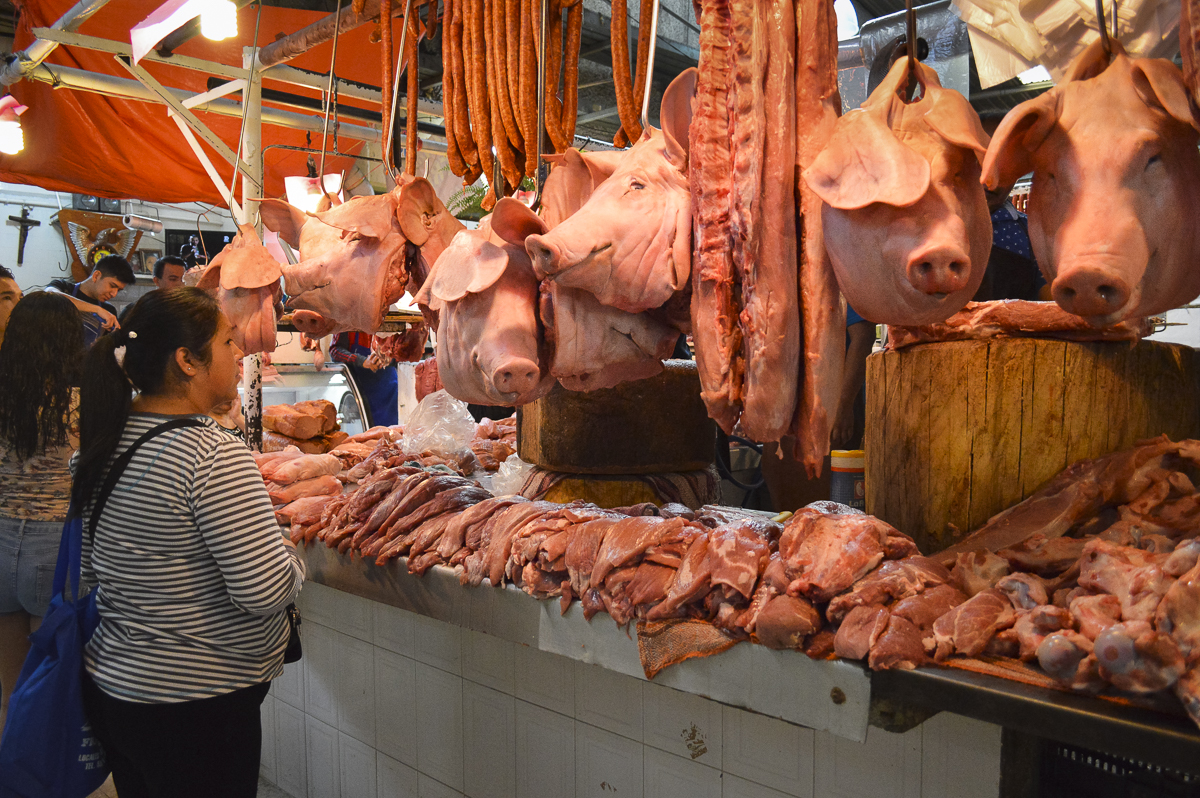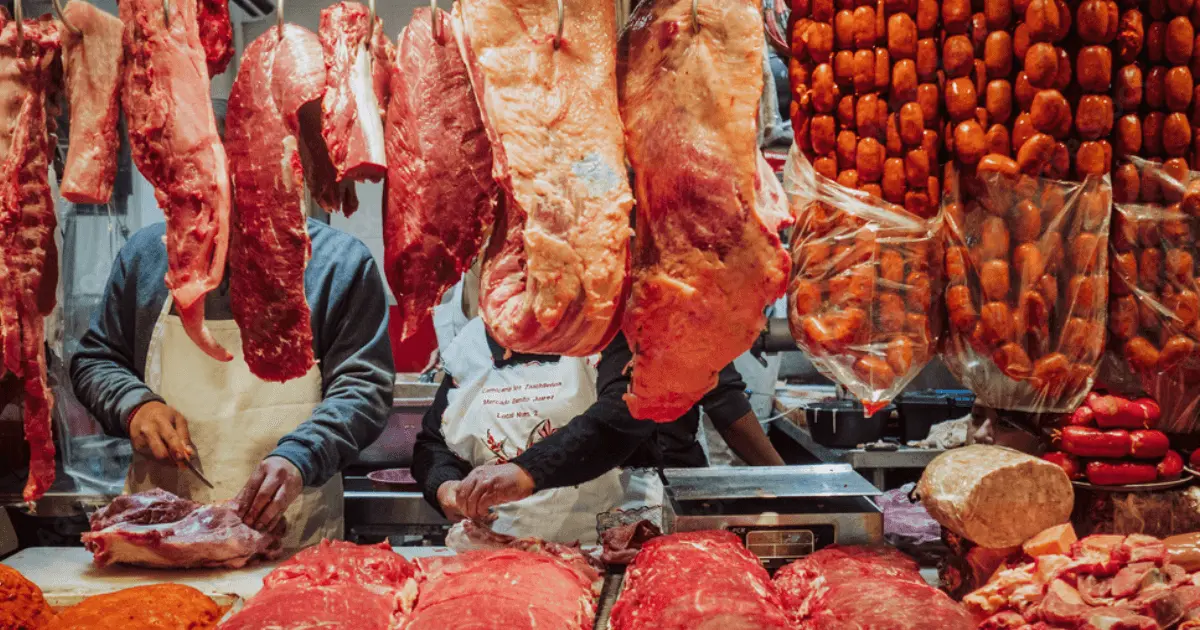Why Citizens Love Bagley Farms Meat Market Edwardsville IL for Their Meat Buying
Why Citizens Love Bagley Farms Meat Market Edwardsville IL for Their Meat Buying
Blog Article
Uncover the Art of the Butcher's Cut in a Modern Meat Market
In the ever-evolving landscape of contemporary meat markets, the butcher's cut has actually transcended its traditional origins, merging age-old craftsmanship with modern methods. What genuinely establishes the modern-day butcher apart is their ability to create a deeper connection between consumers and the origins of their meat.
Advancement of Butchery Techniques

The mid-20th century saw butchery strategies additionally refined by clinical insights into muscle biology and meat aging, boosting both tenderness and taste. Developments like vacuum cleaner packaging and refrigeration expanded item shelf-life, permitting butchers to expand offerings and improve quality assurance. This duration additionally noted the surge of customized equipment, such as band saws and meat slicers, which raised accuracy and effectiveness in meat handling.
The 21st century has presented electronic modern technology into the butchery realm. Electronic systems currently assist in tracking pet provenance and optimizing cuts to fulfill specific customer preferences. In addition, a rebirth in artisanal butchery has arised, mixing standard skills with modern-day understanding to cater to customers seeking honest and lasting meat alternatives. This evolution emphasizes a vibrant interplay in between practice and development, conference contemporary demands while protecting the craft's heritage.

Understanding Meat Cuts

Recognizing the intricacies of meat cuts is vital for both butchers and customers seeking quality and value. Each cut originates from a different component of the pet, imparting special flavors, structures, and cooking techniques. Mastery of these differences not only enhances cooking experiences yet also maximizes the energy of each carcass. For butchers, accurate cuts mirror skill and regard for the craft, ensuring very little waste and optimal yield.
The main groups of meat cuts consist of primal, sub-primal, and retail cuts. Primitive cuts, such as the loin, rib, and chuck, are the huge sections originally divided from the carcass. Butchers after that break these down even more into sub-primal cuts, before finally producing retail cuts available to consumers, like ribeye or tenderloin. Each phase requires mindful attention to physiological structure and muscle make-up.
Comprehending muscle structure is critical; muscle mass used a lot more regularly by the animal have a tendency to be harder and are best fit for slow food preparation approaches, while less-used muscle mass, like those discovered in the loin, are more tender and perfect for barbecuing or roasting. Knowledge with these distinctions equips consumers to make informed selections, boosting their culinary ventures.
Picking Top Quality Meat
Choosing the best meat involves even more than just picking an aesthetically attractive piece from the display. The art of choosing quality meat requires a critical eye and knowledge of particular qualities that symbolize freshness and quality.
Secondly, take into consideration the marbling, which describes the white streaks of fat within the muscular tissue. Correct marbling is a vital sign of tenderness and flavor, as it melts during cooking, enhancing the meat's juiciness. Bear in mind, higher marbling usually correlates with premium top quality cuts, such as USDA Prime.
Appearance is one more critical aspect; meat should feel firm to the touch, not slimed or extremely soft. Furthermore, be conscious of the scent. Fresh meat should have a tidy, neutral smell, devoid of any sour or repulsive smells.
Combining Cuts With Cooking Methods
Effectively coupling cuts of meat with the proper food preparation methods is essential for attaining ideal taste and appearance. These approaches boost the meat's natural flavors and guarantee a juicy surface.
Conversely, tougher my review here cuts navigate to this website like brisket and chuck roast are abundant in collagen, which breaks down into jelly when cooked slowly. These cuts are optimal for braising or sluggish roasting, allowing the meat to tenderize in time and establish deep, complex flavors. Likewise, cuts such as brief ribs and pork shoulder prosper with slow-cooking approaches, where expanded cooking times transform their durable textures right into succulent meals.
Lamb shanks and oxtail, which require prolonged food preparation to soften, are best candidates for stewing or slow-moving simmering. These techniques coax out rich, hearty flavors while keeping moisture. By comprehending the special attributes of each cut, chefs and home chefs alike can elevate their culinary creations, making sure each dish is both pleasing and unforgettable.
The Butcher's Function Today
Navigating the advancing landscape of the modern-day meat market, the butcher's function today prolongs beyond plain preparation of cuts. Contemporary butchers are cooking artisans, instructors, and supporters for sustainable practices. They connect the gap in between the farm and the fork by ensuring ethical sourcing, understanding pet husbandry, and prioritizing openness in the supply chain. This change shows the expanding consumer need for quality over amount, where provenance and pet welfare are vital.
Along with crafting accurate cuts, butchers currently engage straight with customers, offering cooking suggestions and customizing selections to match individual needs and preferences. Their expertise in meat aging, marbling, and taste accounts encourages customers to make informed decisions, boosting their cooking experiences. This personalized solution exhibits the butcher's developing role as a trusted expert in the cooking area.
Additionally, butchers are critical in minimizing waste, utilizing whole pets to create varied items such as sausages and supplies - bagley farms meat market edwardsville il. This extensive method not just appreciates the pet yet additionally straightens with modern sustainability goals. In this means, the modern-day butcher personifies both tradition and advancement, adjusting to an ever-changing market while maintaining the creativity and stability of their craft

Conclusion
Proficiency in comprehending varied meat cuts and high quality signs empowers butchers to give informed suggestions, aligning details cuts with optimal food preparation approaches. By recognizing historical techniques while find out this here embracing modern needs, the butcher's function continues to be essential in today's innovative meat market.
Report this page